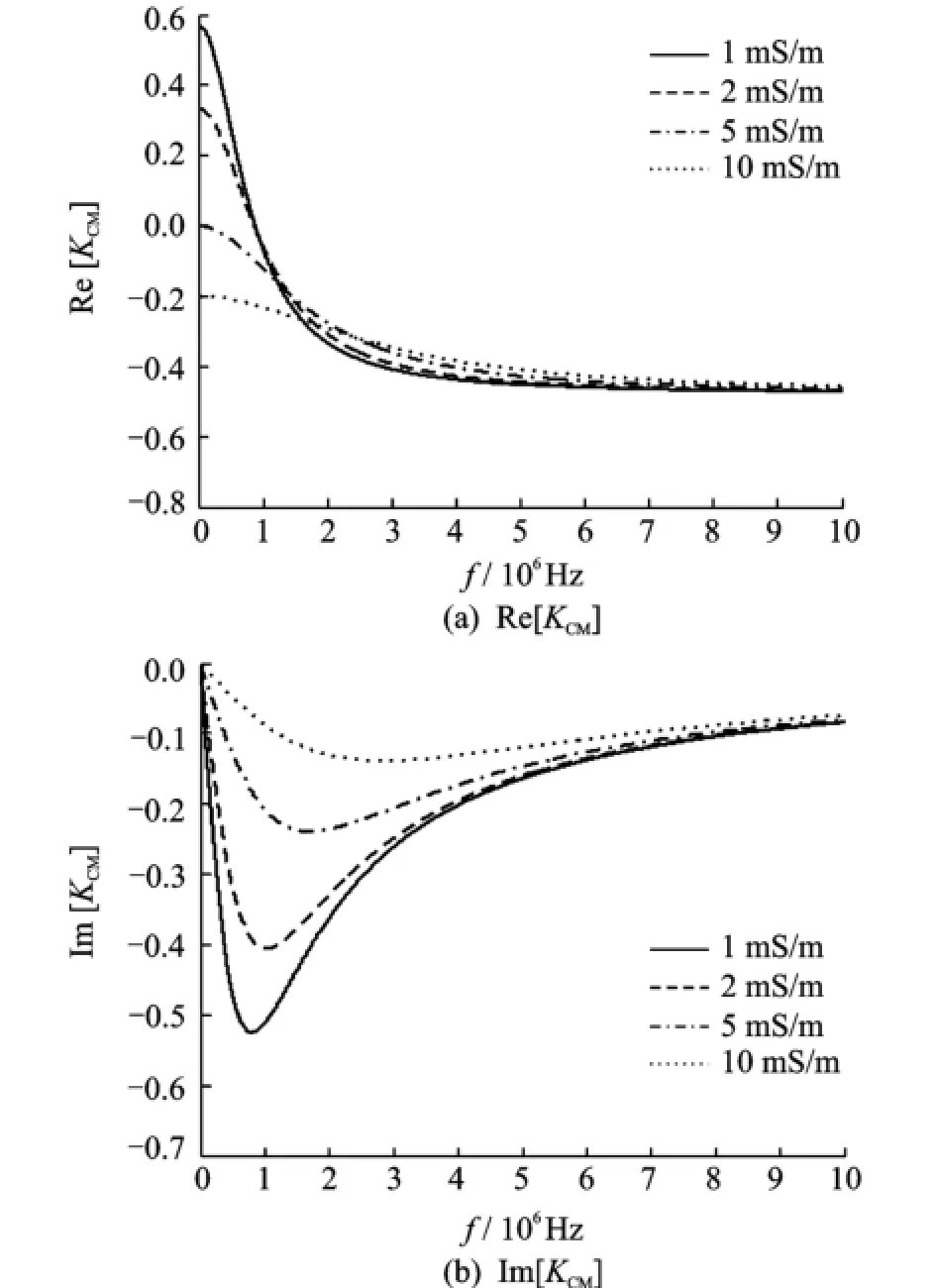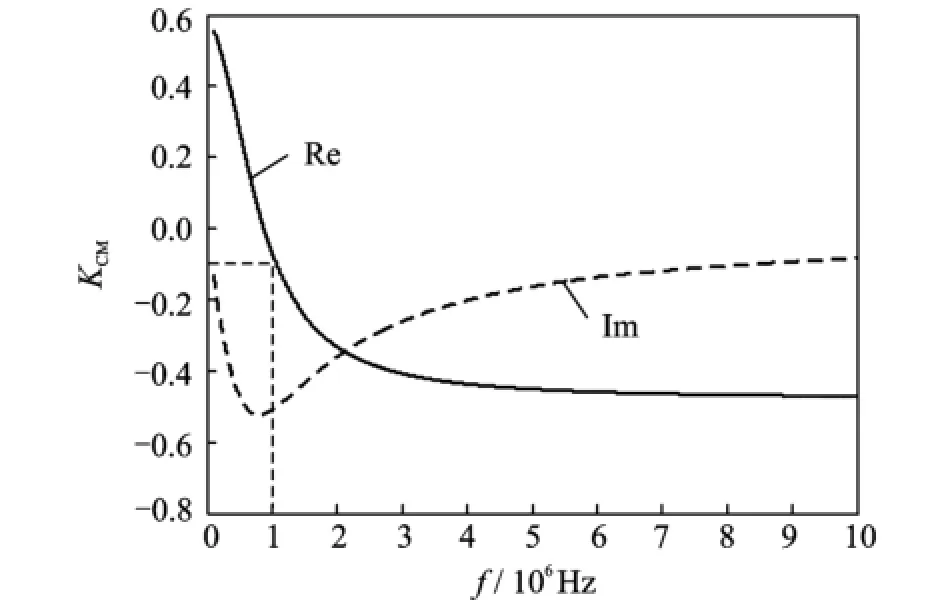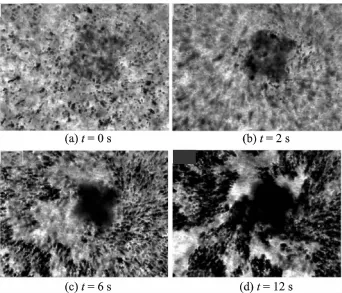ImProvement Design of BiochiP Towards High Stable BioParticle Detection Utilizing DielectroPhoresis ImPedance Measurement
2015-11-24HuangHaibo黄海波QianCheng钱成LiXiangpeng李相鹏ChenLiguo陈立国XuWenkui徐文奎ZhengLiang郑亮SunLining孙立宁
Huang Haibo(黄海波)'Qian Cheng(钱成)'Li Xiangpeng(李相鹏)' Chen Liguo(陈立国)'Xu Wenkui(徐文奎)'Zheng Liang(郑亮)'Sun Lining(孙立宁)
Robotics and Microsystems Center'College of Mechanical and Electrical Engineering&Collaborative Innovation Center of Suzhou Nano Science and Technology'Soochow University'Suzhou 215000'P.R.China
ImProvement Design of BiochiP Towards High Stable BioParticle Detection Utilizing DielectroPhoresis ImPedance Measurement
Huang Haibo(黄海波)'Qian Cheng(钱成)'Li Xiangpeng(李相鹏)*' Chen Liguo(陈立国)'Xu Wenkui(徐文奎)'Zheng Liang(郑亮)'Sun Lining(孙立宁)
Robotics and Microsystems Center'College of Mechanical and Electrical Engineering&Collaborative Innovation Center of Suzhou Nano Science and Technology'Soochow University'Suzhou 215000'P.R.China
Dielectrophoresis impedance measurement(DEPIM)is a powerful tool for bioparticle detection due to its advantages of high efficiency'label-free and low costs.However'the strong electric field may decrease the viability of the bioparticle'thus leading to instability of impedance measurement.A new design of biochip is presented with high stable bioparticle detection capabilities by using both negative dielectrophoresis(nDEP)and traveling wave dielectrophoresis(tw DEP).In the biochip'a spiral electrode is arranged on the top of channel'while a detector is arranged on the bottom of the channel.The influence factors on the DEP force and tw DEP force are investigated by using the basic principle of DEP'based on which'the relationship between Clausius-Mossotti(CM)factor and the frequency of electric field is obtained.The two-dimensional model of the biochip is built by using Comsol Multiphysics.Electric potential distribution'force distribution and particle trajectory in the channel are then obtained by using the simulation model.Einally'both the simulations and experiments are performed to demonstrate that the new biochip can enhance the detection efficiency and reduce the negative effects of electric field on the bioparticles.
dielectrophoresis;impedance measurement;detection;biosensor
0 Introduction
Impedance measurement is a powerful tool for analysis and characterization of bioparticles.It is widely used in bioparticle detection'e.g.bacterial content'but the traditional impedance measurement techniques suffer time-consuming and low sensitivity.An effective strategy to enhance sensitivity and reduce the testing time is to integrate with a dielectrophoresis(DEP)chip into the impedance measurement system.The integrated dielectrophoresis impedance measurement(DEPIM)has advantages of high efficiency'label-free and low costs.
Suehiro designed a DEPIM chip for real-time bacteria monitoring[1]'in which the antibodiesantigens technique was adopted to increase the enrichment efficiency.The antibodies were fixed on the electrode surface'and the bacteria were attracted to the electrode by the DEP force.Then' bacteria could combine with the antibodies by adjusting DEP force and Stokes force properly.As a result'the target bacteria were trapped on the surface of chip'meanwhile'the non-target bacteria are taken to the outlet under the Stokes force. Yang[2]proposed a biochip design for foodborne bacteria detection.The experiment demonstrated that the biochip'which integrated with DEP chip'was more effective than the one without DEP chip.Higginbotham et al.[3]developed a biochip for bioparticle detection'which used traveling wave dielectrophoresis(tw DEP)force todrive bioparticles to detection area for detecting. Hamada et al.[4]designed the bacteria detection chip with both positive dielectrophoresis(p DEP)and negative dielectrophoresis(nDEP).Two working areas are designed in this chip:the concentration area and the detection area.When the bacteria passed through the concentration area' they were driven to the bottom of the channel under the nDEP force.After entering the detection area'the bacteria were captured at detector by the p DEP force.Compared with the detector with p DEP'the nDEP concentrator could further improve the DEP trapping efficiency.
However'there are still some disadvantages in the biochips above.Eioparticles are captured at detector by p DEP force'and they are very close to the electrode.The electric field strength is very strong near the electrode'which has some negative effects on bioparticle viability.Kang et al.[5]found that live cancer cells died soon when they were exposed in a very high electric field.Eurthermore'Donato et al.[6]found that the cell metabolism was affected by the electric field after 10 min of exposure'cells no longer produce green fluorescent protein(GEP)after 15 min of exposure and the most of the cells being dead.In addition'Joule heating effect was obvious near the electrode'and it was harmful for the cell activity[7].Due to the negative effects of electric field on bioparticles viability'the concentration of the living bioparticles in the detection area was low'which significantly enlarged the detection time costs.Therefore'the biochips above are still inefficient and unstable.
A novel biochip design is proposed for bioparticle detection with both nDEP and tw DEP' which can significantly enhance the detection efficiency'meanwhile reduce the negative effects caused by the electric field.The schematic diagram of the proposed bioparticle detection chip is shown in Eig.1'and the biochip is made up of microelectrode'microchannel and detector.The spiral electrode is arranged on the top of the channel'while the detector is arranged on the bottom of the channel.Eioparticles in the channel are pushed to the bottom of the channel under n DEP force and gravity.Meanwhile'they are driven to the centre of the detector under the tw DEP force. As a result'the bioparticles are captured on the detector.

Eig.1 Schematic diagram of bioparticle detection chip based on nDEP and tw DEP
1 Theoretical Analysis
1.1 DEP force
The dielectrophoresis force on the spherical particle which immersed in a solution can be formulated as[8]

where r denotes the radius of the spherical particle'εmthe permittivity of the media'E2the RMS value of the electric field'φithe phase angle component in Cartesian coordinate'Re[KCM]the real part of Clausius-Mossotti factor which refers to p DEP and n DEP'Im[KCM]the imaginary part of Clausius-Mossotti factor'and KCMis formulated as

In the paper'the polystyrene beads with radius 1μm are used to simulate the bioparticles. Tables 1 lists the related parameters of polystyrene beads and solution.

Table 1 The related Parameters of Polystyrene beads and solution
1.2 Gravity
The gravity of the immersed particle can be formulated as

where V andρpdenote the volume and density of the particle'respectively'andρmis the density of solution.
1.3 Stokes force
The Stokes force of the particle is formulated as follows

whereηdenotes the dynamic viscosity of the solution'and v the relative velocity of the particle and the solution.
As shown in Eig.2'particles in the channel are pushed to the bottom of the channel driven by the nDEP force and gravity.Meanwhile'they are driven toward the centre of the detector with the tw DEP force.As a result'the bioparticles are captured by the detector and detected with the impedance measurement method.

Eig.2 Eorce analysis of particles in channel
1.4 Influence factor
The velocity of the particle determines the detection efficiency.Erom Eq.(1)'it is known that the velocity of the particle relates to three parameters:Re[KCM]'Im[KCM]and electric field intensity.Increasing the voltage applied to the electrode can enhance the strength of the electric field.However'excessive voltage is not conducive to the experimental operation.Hence'we only consider the influence of Clausius-Mossotti
(CM)factor on the velocity.As shown in Eq.(2)'Re[KCM]and Im[KCM]are related to the frequency of the electric field'permittivity and conductivity of the particle and solution.Permittivity and conductivity remain unchanged for specific configuration of particles and solution. Therefore'the velocity of the particle is controlled by controlling the frequency of the electric field and conductivity of the solution.
Eig.3 illustrates the relationship between CM factor and the frequency of the electric field when the polystyrene beads with conductivity of 5 mS/m are immersed in a solution of different conductivity.It is seen that Re[KCM]is always negative in the solution of conductivity 5 mS/m and 10 mS/m'and its variation range is small. Meanwhile'the variation range is larger in the solution of conductivity 1 mS/m than in the solution of conductivity 2'5 and 10 mS/m.As shown in Eig.3(b)'Im[KCM]can attains larger values in the solution of conductivity 1 mS/m than in the solution of conductivity 2'5 and 10 m S/m'which implies a larger tw DEP force generation.As a result'the solution of conductivity is set at 1 mS/m in the paper.

Eig.3 Relationship between CM factor and frequency of electric field
The polystyrene beads of conductivity 5 mS/ m are immersed in the solution of conductivity 1 mS/m'the relationship between CM factor and the frequency of the electric field is shown in Eig.4.

Eig.4 CM factor in solution of conductivity 1 mS/m
In order to speed up the collection rate in the horizontal plane'Im[KCM]should be minimized to its maximum.However'when the frequency of the electric field is 0.8 M Hz'Re[KCM]=0' nDEP force has no effect on the particle motion. Therefore'the frequency of the electric field is set at 1 MHz so that Re[KCM]=0.08'which can well meet the requirements of the experiment.
2 Numerical Simulation
Comsol Multiphysics 4.3 is used to study the electric field distribution and particle trajectory. The microchannel is designed a cylindrical area with radius 330μm and 150μm high.In order to collect particles better'a tilt angle with 5°is designed at the bottom of the channel'as shown in Eig.2.The spiral electrode is arranged on the top of the channel'both the width and spacing of the electrodes are 40μm.The other simulation parameters are listed in Table 2.

Table 2 Simulation Parameters
Since the cylindrical area is symmetric'its physical model can be simplified as a plane model.Electric potential distribution in the channel can be obtained by solving Laplace equation in the simulation area'as shown in Eig.5.The electrode potential is very high near the electrode on the top side of the channel'while it is low in the detection area at the bottom of the channel. Thus'the particles captured at the detection area are less affected by the electric field.The force distribution is illustrated in Eig.5'and it can be seen that the composite forces point to the detection area.The particle trajectory is shown in Eig. 6'and it is seen that particles move towards the detection area under composite forces successfully as we expected.

Eig.5 Potential distribution and force distribution

Eig.6 Particle trajectory
Note that a whirlpool exists in the center of the spiral electrode'as shown in Eig.5.the composite forces within area enclosed by the red curve points to the center of the spiral electrode'and the particles within the area are driven to the center of the spiral electrode'as illustrated in Eig.6. Note that for improving the detection efficiency' the particles should be maintained outside the region enclosed by the red curve.
3 ExPeriment
An experiment is carried out with new biochip based on DEPIM'as shown in Eig.7.The biochip is made up of DEP chip'microchannel and detector.The DEP chip is made of ITO glass'and the spiral electrode is etched on the glass.A cylindrical microchannel is designed at the center of the glass substrate.Micro holes are designed around each side of the glass substrate as the inlet and outlet of the microchannel.In the later research'the detector will be arranged on the bottom of the channel.The DEP chip is upside down on the glass substrate'the electrode and conductor are connected by conductive adhesives.
When the solution enter into the channel' the four electrodes are respectively applied an AC signal(V0sin(ωt)).It is seen that particles in the channel are pushed to the bottom of the channel under nDEP force and gravity.Meanwhile'they moves toward the centre of the detector under the tw DEP force(see Eigs.8(a—c)).Einally' the particles are captured on the detector'as seen in Eig.8(d).

Eig.7 High stable impedance measurement based on biosensor(without detector)

Eig.8 Particle concentration under DEP force
4 Conclusions
The traditional impedance measurement technique is time-consuming and low sensitivity. Ey integrating a DEP chip into the design of the impedance measurement system'the detection efficiency can be enhanced significantly.However' due to the fact that strong electric field may cause unexpected negative effects on bioparticle viability'thus causing instability in the impedance measurement.In the paper'a novel biochip design improving the detection efficiency and decreasing the negative effects caused by the electric field is presented.Ey inverting a DEP chip at the top of the channel'particles are concentrated at the detector by n DEP force'tw DEP force and gravity.Eased on DEP principle analyzing'the relationship between CM factor and the frequency of the electric field is obtained'furthermore' optimal simulation and experimental parameters are obtained.The two-dimensional model of the biochip is built with the help of Comsol Multiphysics.Electric potential distribution'force distribution and particle trajectory in the channel are obtained by solving the simulation model.Einally'both simulation and experiment are performed to prove the efficiency of the proposed biochip design.
Acknowledgements
This work was supported by the Project of Youth Eund of National Natural Science Eoundation(No. 61203208)'the National Natural Science Eoundation of China(No.61327802).
[1] Suehiro J'Noutomi D'Shutou M'et al.Selective detection of specific bacteria using dielectrophoretic impedance measurement method combined with an antigen-antibody reaction[J].Journal of Electrostatics'2003'58(3):229-246.
[2] Yang L.Dielectrophoresis assisted immuno-capture and detection of foodborne pathogenic bacteria in biochips[J].Talanta'2009'80(2):551-558.
[3] Higginbotham S N'Sweatman D R.A combined travelling wave dielectrophoresis and impedance sensing device for sensing biological cell suspensions[J]. Journal of Physics D:Applied Physics'2008'41(17):1-9.
[4] Hamada R'Takayama H'Shonishi Y'et al.A rapid bacteria detection technique utilizing impedance measurement combined with positive and negative dielectrophoresis[J].Sensors and Actuators E:Chemical'2013'181:439-445.
[5] Kang Y'Li D'Kalams S A'et al.DC-dielectrophoretic separation of biological cells by size[J].Eiomedical Microdevices'2008'10(2):243-249.
[6] Donato S S'Chu V'Prazeres D M E'et al.Metabolic viability of Escherichia coli trapped by dielectrophoresis in microfluidics[J].Electrophoresis'2013' 34(4):575-582.
[7] Lewpiriyawong N'Yang C'Lam Y C.Electrokinetically driven concentration of particles and cells by dielectrophoresis with DC-offset AC electric field[J]. Microfluidics and Nanofluidics'2012'12(5):723-733.
[8] Wang X E'Huang Y'Eecker E E'et al.A unified theory of dielectrophoresis and travelling wave dielectrophoresis[J].Journal of Physics D:Applied Physics'1994'27(7):1571-1574.
(Executive editor:Xu Chengting)
TP211.4 Document code:A Article ID:1005-1120(2015)02-0143-05
*CorresPonding author:Li Xiangpeng'Associate Professor'E-mail:licool@suda.edu.cn.
How to cite this article:Huang Haibo'Qian Cheng'Li Xiangpeng'et al.Improvement design of biochip towards high stable bioparticle detection utilizing dielectrophoresis impedance measurement[J].Trans.Nanjing U.Aero.Astro.'2015'32(2):143-147.
http://dx.doi.org/10.16356/j.1005-1120.2015.02.143
(Received 8 January 2015;revised 17 January 2015;accepted 31 January 2015)
杂志排行
Transactions of Nanjing University of Aeronautics and Astronautics的其它文章
- StePPing Control Method of Linear DisPlacement Mechanism Driven by TRUM Based on PSoC
- Large Thrust Trans-scale Precision Positioning Stage Based on Inertial Stick-SliP Driving
- Intelligent Control Algorithm of PTZ System Driven by Two-DOF Ultrasonic Motor
- Dynamic Model Identification for Ultrasonic Motor Frequency-SPeed Control
- Dynamic Loads and Wake Prediction for Large Wind Turbines Based on Free Wake Method
- Numerical Investigation on Drag Reduction Effect by Mass Injection from Porous Boundary Wall
